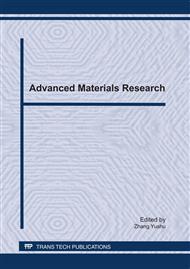p.98
p.103
p.107
p.111
p.116
p.121
p.126
p.131
p.136
Development of Processing Maps for DC Cast Modified and Unmodified Hypereutectic Al-Si Alloys
Abstract:
The hot deformation behavior of DC cast phosphorous modified and unmodified hypereutectic Al-Si alloys was studied in the temperature range of 400-500 °C and strain rate range of 0.001-1 s-1. Processing maps were developed to evaluate the efficiency of the hot deformation and to identify the instability region. The results show that the peak stresses of the unmodified alloy are higher than that of the modified alloy at the strain rate of 1 s-1 and temperatures of 400 and 440 °C. The maximum power dissipation efficiencies for both the alloys are in the region of T=480-500 °C and =0.01-0.1 s-1. The flow instabilities for both the alloys occur in regions of high strain rate about 1 s-1 and temperature about 400 and 500 °C. The instability region area of the unmodified alloy is larger than that of the modified alloy. In addition, the primary Si cracking frequencies of the unmodified alloy are higher than that of the modified alloy when compared at the same deformation rate and temperature. The coarser primary Si particles of the unmodified alloy cause higher stress concentration around them when deformed at low temperature and high strain rate.
Info:
Periodical:
Pages:
116-120
Citation:
Online since:
February 2011
Authors:
Keywords:
Price:
Сopyright:
© 2011 Trans Tech Publications Ltd. All Rights Reserved
Share:
Citation:


